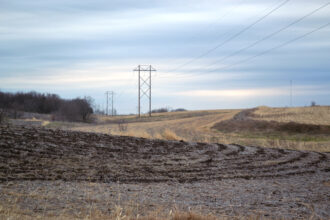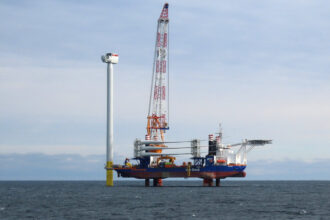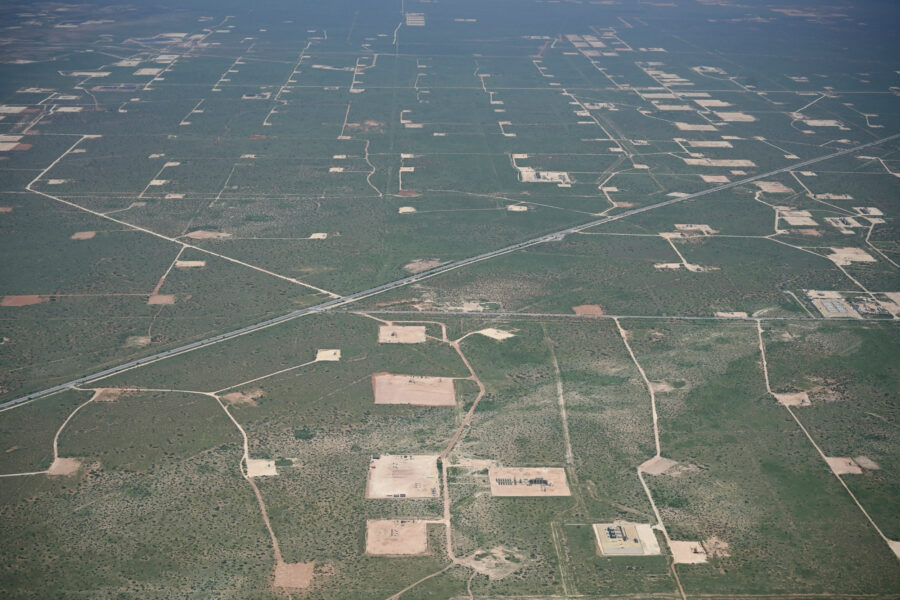In recent months, residents in Texas rushed a community meeting to challenge a nearby wind proposal. In Indiana, more than 70 people joined a lawsuit to stop a solar project in their town. And in Michigan, the state approved language for a ballot initiative that would repeal a law that gave the state authority to permit or approve large renewable energy projects even if rejected by local governments.
An expanding body of research suggests these disagreements are part of a trend, rather than isolated incidents. As solar and wind projects are proposed in more places, more communities seem to be deciding they don’t want anything to do with them. Though these residents are not the majority, members of the industry, along with policymakers and researchers, worry that such increased challenges will slow the overall pace of decarbonization and efforts to respond to climate change.
A recently released survey from Lawrence Berkeley National Laboratory adds some fresh evidence and details about the phenomenon. Community opposition and local ordinances are among the top reasons for delays and cancellations of wind and solar projects, according to the survey of industry professionals who helped develop about half of all large renewable projects from 2016 to 2023 in the United States.
“Previously, a lot of the bottleneck to deployment of renewables was the cost,” said Sarah Mills, an associate professor and researcher at the University of Michigan who focuses on energy land use planning, zoning and policymaking. “As the costs of renewables have come down, I think that the newest bottleneck has been social acceptance.” Mills is not an author of the new survey, published in January, although she has collaborated with its authors on other research.
Survey respondents noted that about a third of wind and solar applications were canceled in the face of community opposition. About half were delayed six months or more, according to the respondents.
The trend of community pushback on renewables projects is a complex one, in part because in numerous polls, a majority of Americans support building more wind and solar projects. A 2023 Washington Post/ University of Maryland poll found that the majority of people, regardless of political party, also said they wouldn’t mind having those projects built in their communities.
But community opposition is still impeding projects, according to the Berkeley Lab survey of 123 builders from 62 companies. “For both wind and solar, opposition is becoming more prevalent and is more expensive to address than it was five years ago,” the survey found. “Developers expect this trend to continue, becoming even more prevalent in the next five years.” The permit process often prompted pushback, respondents said, and failures can be costly. The survey found that the average expenses that could not be recovered from cancellations were about $2 million per solar project and $7.5 million per wind project.
Mills and other researchers are trying to understand the flashpoints.“An energy transition is going to require building lots of stuff, and it’s going to go into communities,” Mills said. “Understanding the patterns that we see in how communities respond will help make that transition easier.”
When evaluating a location for wind turbines or solar panels, developers often prioritize wide-open land. They also need ready access to the existing electrical grid and transmission lines to carry electricity to homes and businesses. In the Berkeley Lab survey, grid interconnection was the most commonly cited reason for solar project cancellation and for both wind and solar delays. But community support has become an increasingly important element.
For both wind and solar projects, community opposition and restrictive local ordinances or zoning were among the top three reasons for delays and cancellations, the survey found. The majority of respondents in the Berkeley Lab survey indicated that community opposition was most likely coming from a vocal small group; some respondents felt opposition often originated outside of the community. (Fossil fuel interests have been linked, in media reports and other published research, to attempting to influence local opinion on large renewables projects in rural areas.)
The most common concerns raised about renewables vary depending on whether a project is wind or solar, according to Mills, but many are “rooted in the same thing, which is people wondering what kind of impact a large wind or solar project is going to have on their quality of life.” The Berkeley Lab survey found that developers—when reviewing why projects were canceled—recognized they needed to involve communities earlier.
In past research on wind construction in the Midwest, Mills found that opposition may be lower in areas with fewer “natural amenities,” such as lakes, ponds and rolling hills. In communities where land is largely used for industry or farming, she found, residents may be more amenable to renewable construction.
But there are few hard and fast rules about opposition, and some developers in the Berkeley Lab survey said they found it difficult to predict how communities may react. Mills said that different communities—and the people living within them—can differ about whether a renewable project is a benefit or a burden. Renewable projects can reduce pollution and fight climate change. They can also change landscapes and traffic patterns.
This story is funded by readers like you.
Our nonprofit newsroom provides award-winning climate coverage free of charge and advertising. We rely on donations from readers like you to keep going. Please donate now to support our work.
Donate NowNumerous researchers examining social acceptance of renewables have also found inequality plays a role. A research paper published in 2023 examined wind projects built in North America—in both Canada and the United States—between 2000 and 2016. In Canada, it found opposition was more likely and more intense in wealthier communities; in the U.S., communities with a higher proportion of white residents were more likely to resist proposed projects. The authors described that opposition as a form of “energy privilege,” which, they said, could slow the energy transition and extend reliance on fossil fuel plants, which have largely been located in lower-income communities and communities of color.
A majority of wind and solar developers who responded to the Berkeley Lab survey agreed that opposition to projects was more likely to arise in mid- to high-income communities.
“It speaks to that access: Who has the ability to say ‘no’ to potential economic development opportunities that may not be their preferred path forward for their community?” said Robi Nilson, a postdoctoral researcher at Berkeley Lab and one of the study’s authors. Nilson said communities “least likely or least able to resist them” are often saddled with less-desirable industries or facilities.
Regardless of the factors, some opposition is inevitable, Nilson said. “It makes sense that there’s growing opposition as projects get bigger and are in more places.”
About This Story
Perhaps you noticed: This story, like all the news we publish, is free to read. That’s because Inside Climate News is a 501c3 nonprofit organization. We do not charge a subscription fee, lock our news behind a paywall, or clutter our website with ads. We make our news on climate and the environment freely available to you and anyone who wants it.
That’s not all. We also share our news for free with scores of other media organizations around the country. Many of them can’t afford to do environmental journalism of their own. We’ve built bureaus from coast to coast to report local stories, collaborate with local newsrooms and co-publish articles so that this vital work is shared as widely as possible.
Two of us launched ICN in 2007. Six years later we earned a Pulitzer Prize for National Reporting, and now we run the oldest and largest dedicated climate newsroom in the nation. We tell the story in all its complexity. We hold polluters accountable. We expose environmental injustice. We debunk misinformation. We scrutinize solutions and inspire action.
Donations from readers like you fund every aspect of what we do. If you don’t already, will you support our ongoing work, our reporting on the biggest crisis facing our planet, and help us reach even more readers in more places?
Please take a moment to make a tax-deductible donation. Every one of them makes a difference.
Thank you,













